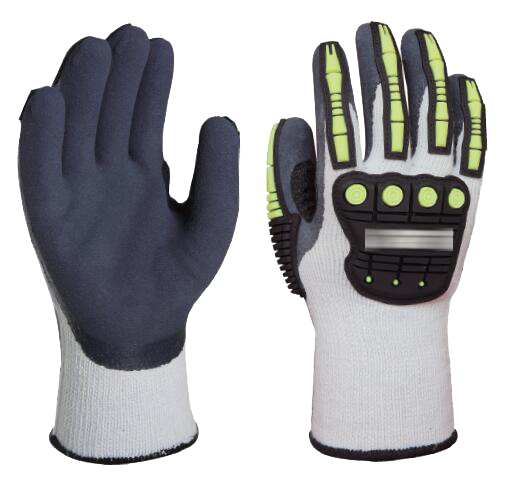How to Choose Cut-Resistant Gloves
Cut-resistant gloves are essential in various industries where workers face the risk of injuries from sharp objects and blades. Choosing the right cut-resistant gloves is crucial for ensuring worker safety and preventing accidents. Here's a guide on how to make informed decisions when selecting cut-resistant protective gloves:

1. Understand Cut Resistance Levels:
Cut-resistant gloves are often rated on a scale based on their ability to withstand cuts. Familiarize yourself with the ANSI/ISEA cut resistance levels, ranging from A1 to A9, with A9 providing the highest level of protection. Evaluate the specific cut hazards in your workplace to determine the appropriate level needed.
2. Choose the Right Material:
Cut-resistant gloves come in various materials, each offering different advantages. Common materials include:
High-Performance Polyethylene (HPPE): Lightweight and durable.
Kevlar: Known for its strength and heat resistance.
Stainless Steel Mesh: Provides excellent cut and puncture resistance.
Nitrile Coating: Enhances grip and abrasion resistance.
3. Consider Coating Types:
Some cut-resistant gloves come with coatings that provide additional benefits, such as enhanced grip and durability. Common coatings include polyurethane, nitrile, and latex. Choose a coating that aligns with the specific needs of the task.
4. Assess Dexterity Requirements:
Consider the level of dexterity required for the job. Some tasks demand precise hand movements, and choosing gloves with the right balance of cut resistance and dexterity is crucial. Look for gloves that allow for flexibility without compromising protection.
5. Evaluate Comfort and Fit:
Workers are more likely to wear gloves consistently if they are comfortable. Consider factors such as breathability, flexibility, and proper sizing to ensure a comfortable fit. Ill-fitting gloves can compromise both comfort and protection.
6. Determine Other Hazards:
Identify other hazards present in the workplace, such as chemical exposure or heat. Choose cut-resistant gloves that offer additional protection against these hazards, or use them in conjunction with other specialized gloves when necessary.
7. Understand Industry Regulations:
Be aware of industry regulations and standards regarding cut-resistant gloves. Compliance with these standards is crucial for ensuring that the selected gloves meet the necessary safety requirements for the specific industry.
8. Choose the Right Glove Type:
Different types of cut-resistant gloves are designed for specific applications, including:
Cut-Resistant Sleeves: Protect the forearm and wrist.
Impact-Resistant Gloves: Provide additional protection against impacts.
Heat-Resistant Cut Gloves: Suitable for tasks involving heat hazards.
9. Prioritize Durability and Longevity:
Consider the durability of the gloves, especially in industries where gloves are subjected to heavy use. Look for gloves that can withstand wear and tear over an extended period, minimizing the need for frequent replacements.
10. Seek Expert Advice:
If uncertain about the best cut-resistant gloves for a specific task, seek advice from safety professionals or suppliers. They can provide valuable insights and help choose the most appropriate gloves based on the unique requirements of the job.
In conclusion, choosing cut-resistant protective gloves involves a careful consideration of various factors, including cut resistance levels, materials, coatings, dexterity, comfort, and industry standards. By understanding these aspects, employers can make informed decisions to ensure that workers are equipped with the most effective and appropriate cut-resistant gloves for their tasks, contributing to a safer work environment.


